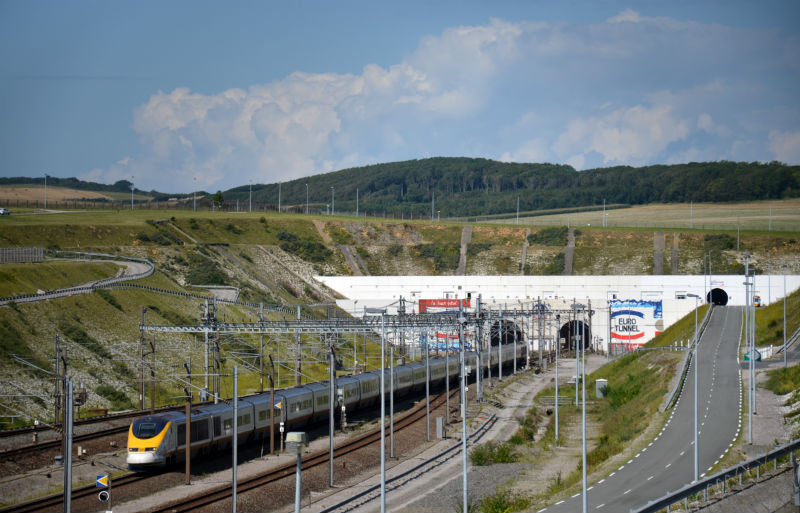 The start of Abdul Haroun's walk, which inspired On A Wing And A Prayer
The start of Abdul Haroun's walk, which inspired On A Wing And A Prayer
According to the Cambridge Idioms Dictionary, the phrase means:
if you do something on a wing and a prayer, you do it hoping that you will succeed although you are not prepared enough for it
You may want to reflect on how this definition, and notions from the discussion between Alia, Sara, Umut and Olga transpire in the film itself: ‘Alia Syed on her video installation On A Wing and A Prayer’
Reflection by Umut Erel
When watching ‘On a Wing and a Prayer’ one of the things that struck me was my own very strong visceral reaction. Watching Alia’s walk through the tunnel made me feel the narrowness of the tunnel, the bright lights and I held my breath whenever she turned away from oncoming cars towards the tunnel walls. I felt scared, I felt protective towards her, indeed I was angry that she would expose herself to the risk of walking the tunnel – without, of course knowing her at all! It is these reactions of mine, which made me, reflect on how important embodied ways of knowing about ‘risk’ ‘fear’ and also caring for an other, even an unknown other, are.
Reflecting on my reaction to the film made me think more about the relationship of Alia Syed’s journey through the tunnel to Mr. Haroun’s journey through the tunnel. It raises the question of whether this Syed’s journey is a re-enactment, a phenomenological engagement with Mr Haroun’s journey and what the ethical and political challenges of this are. Is Alia’s journey a way to step into Mr. Haroun’s shoes? Can that ever be possible, and how would such a strategy confuse positionalities of relative privilege in terms of mobility rights and immobilities?
In this sense I find Alia’s reflection on her artwork very helpful. She argues that this is not a way of telling Mr. Haroun’s story or re-enacting his journey, but instead a way of expressing her response to hearing about his journey and the judicial responses to it. Bringing her response to Mr. Haroun’s journey, as well as the ways in which immigration regimes, including detention centres and in this case the legality of obstructing the tunnel, to an audience takes on a different meaning for me. When re-focusing attention on Alia’s response, the questions raised in my mind become centred around what kind of relationalities we can build with people who are fleeing and whose journeys are full of risks because of the restrictions of national borders and immigration regulations.
From this perspective, Alia’s journey through the tunnel, which we as audience can sense through the camera, becomes a way of reflecting on how to build such relationalities. How can audiences express their worry about and care for migrants? What are the possibilities and difficulties of building such relations of care, when the language of ‘care’ has at the same time been employed to present migrants and refugees as risks and threats to the British population and the smooth running of the tunnel channel and its profits? How can we think about these tensions and in turn respond to them in a politics that develops solidarities within and despite these tensions?
Seminar responses
During the event, Alia Syed, Sara de Jong, Umut Erel and Olga Jurasz hosted a seminar which reflected on the role of the law in constituting citizens and migrants as well as the different spaces and journeys informing migrations, mobilities and immobilities. This will was followed by an open exchange between all participants on the ethical, political and artistic issues raised by Syed's work.
After the event participants were asked to reflect upon questions of identity and their learnings from the screening and the discussion. .
Here’s a few quotes from participants’ comments:
‘Great film and discussion about freedom to move – Alia Syed, hierarchies of citizenship and belonging and how who we are enables greater or lesser freedom of movement. Very thought-provoking’
‘It’s made me wonder about responsibility – why we don’t question why people risk their lives to get here and we’re only obsessed with the end result’
‘Is there such a thing as freedom? If so, what is it? Can complete freedom of speech, dress, expression of self exist?’
‘Excellent discussion on a very interesting and evocative piece of work. Bringing together the different perspectives – law, political science and sociology- worked very well. Made me think about the difficulties of navigating legal landscapes and the absurdity of migration legislation.’

















Rate and Review
Rate this video
Review this video
Log into OpenLearn to leave reviews and join in the conversation.
Video reviews